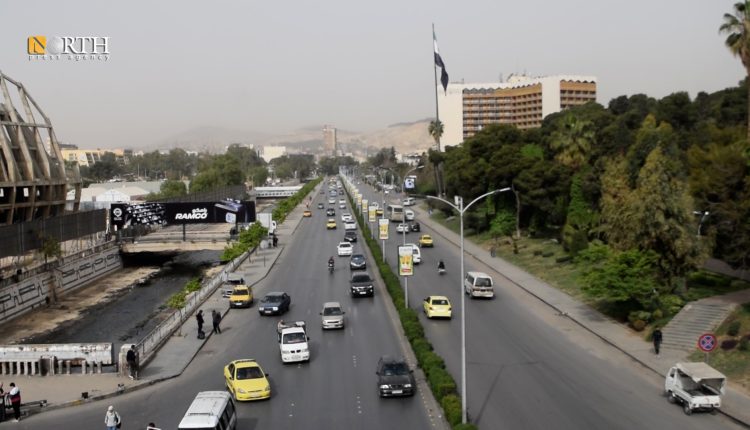Syrian Economy Stranded Between Absence of Vision and Reconstruction Challenges
By Norman al-Abbas
DAMASCUS, Syria (North Press) – In the absence of a clear digital framework and strategic vision in Syria, economic policies are being crafted on what experts describe as “chaotic foundations.” This raises fundamental questions about the current structure of Syria’s economy.
Do policymakers have access to accurate data for assessing the economic reality? And how reliable are the available figures in such a non-transparent environment?
Unclear Economic Policy
Qusay al-Dokhi, a Damascus resident, believes the economic policy lacks clarity and that the country’s economic condition is collapsing. He called for the activation of financial oversight and inspection.
He told North Press that most Syrians live below the poverty line, emphasizing the urgent need to involve both domestic and foreign experts in restructuring national institutions.
Syrian journalist Raghda Khweis stated that over 90% of Syrians are living below the poverty line, describing prices as “unrealistic compared to salaries that don’t last more than two days.”
She added that employees stand in lines for five days to receive a salary that disappears in one day.
She told North Press, “The living conditions are dire. We haven’t seen any well-studied decisions being implemented, nor anything being applied on the ground.” She stressed the need not to neglect the country’s own experts.
Hussam Haj Ibrahim, another Damascus resident, believes that the Syrian professionals who fled and studied abroad during the war gained valuable knowledge that must be utilized.
He added to North Press, “An economy can’t be built randomly. It requires numbers, analysis, and surveys from the streets, people, and experts.” He called for a regulatory body responsible for delivering such data to the government.
Recession or Inflation?
Dr. Yasser al-Mashaal, professor at the Faculty of Economics, Damascus University, said the Syrian economy is currently operating in a reactive mode, akin to “firefighting” rather than planned development.
He stated that current approaches only address minor, immediate problems without a comprehensive strategy, and that no independent vision for Syria’s economy has yet been developed. Instead, responses to temporary crises dominate.
He described the current solutions as short-term and piecemeal, emphasizing that there is no clear post-liberation economic plan. He stressed the need to diagnose the country’s economic state over the past 24 years by calculating income gaps, inflation gaps, and recession levels.
Regarding data availability, al-Mashaal explained that statistics do exist, particularly from the Central Bureau of Statistics, covering 24 years, with an estimated accuracy rate of about 70–80%.
He also pointed to the possibility of using data from the Central Bank and the State Planning Commission to formulate economic plans.
As an example of misdiagnosis, he mentioned the mistaken belief that Syria’s inflation was purely monetary—caused by excessive money supply. However, data analysis revealed that the inflation was actually structural. As a result, current monetary policies like liquidity retention are ineffective and may produce adverse effects.
He stressed that the solution starts with correctly diagnosing the economic reality and identifying structural gaps. “Are we facing recession or inflation?” he asked, pointing to clear signs of recession driven by weak economic foundations.
The real issue, he said, lies in underproduction rather than monetary imbalance. He noted that liquidity retention policies, whether intentional or not, have worsened economic instability, pushing prices higher and destabilizing the exchange rate—even if fluctuations are currently moderate.
He emphasized the need for an economic strategy built on accurate diagnosis, with clear goals and a defined timeline. Achieving this requires institutional cooperation among the Ministry of Economy, Ministry of Finance, and the Central Bank.
Economic Identity
Dr. Majdi al-Jamous, professor of economics in Damascus, stated that Syria lacks both a national economic project and a clear economic identity. He described the economy as being in a “clinical death” state, where all sectors operate far below capacity, making it difficult to build a national economy under current conditions.
He pointed to a critical opportunity that arose with the decision to lift sanctions, which reintegrated Syria into the global financial system, including the SWIFT network, after years of isolation.
He argued that rebuilding Syria’s economy cannot be a solo effort. Experience over the past years has shown that self-reliance alone has led to the deterioration of most sectors.
He emphasized the importance of external assistance, noting that the lifting of sanctions presents a chance to attract investment in vital sectors such as energy, transport, real estate, and technology.
Despite the importance of the sanctions relief, al-Jamous believes the greater challenge lies in how the new government will seize this opportunity to build a national economic project and form an economic identity for Syria.
As for data, al-Jamous confirmed its necessity for understanding reality and planning for the future. However, he stressed that under Syria’s catastrophic conditions, data is often bypassed. Talking about figures only becomes effective when a clear economic identity is established.
He concluded that Syria is currently outside international classifications and frameworks. To illustrate the weakness of the economic situation, he pointed out that the 2024 national budget was under $3 billion—“not a budget befitting a state,” he said.
Between a reactive approach to economic crises and deep structural inflation that worsens daily life, and amid new opportunities presented by the lifting of sanctions, Syria today stands at a decisive crossroads. The nation needs a clear economic vision, accurate data, and effective institutional coordination to begin the road to recovery.
Additional Reporting by Khalaf Maou
Editing by Kardo Roj

